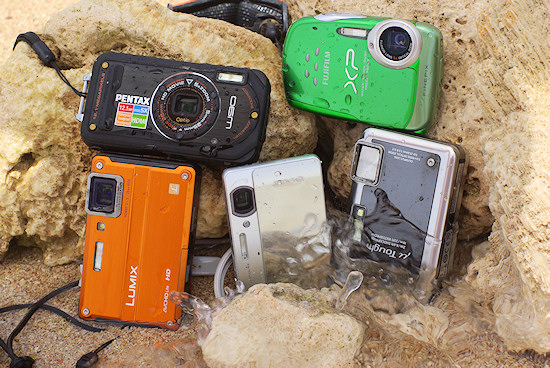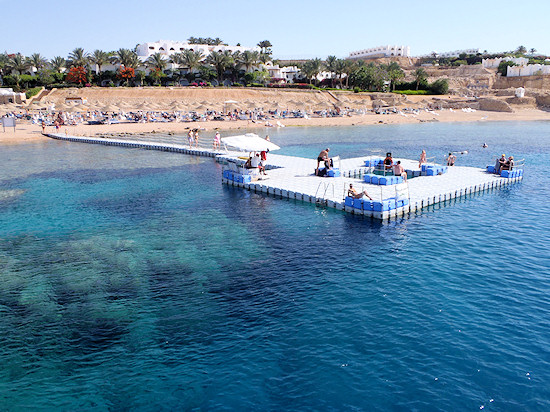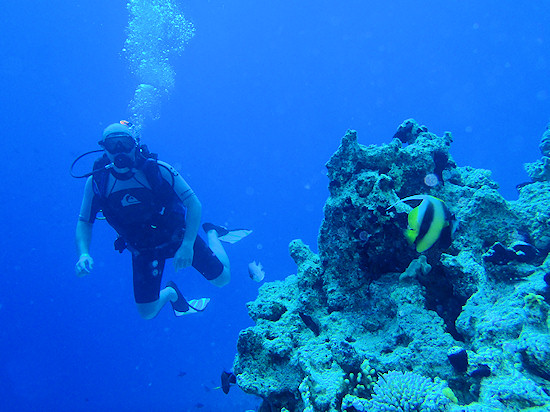Underwater cameras test 2010
1. Introduction
 |
Our last year’s test of underwater cameras has been very popular. Small wonder we decided very quickly to conduct it this year too, especially that during the last 12 months we saw the next crop of waterproof point and shoot cameras hitting our shelves (we also invite You to read our "Underwater cameras test 2011"). Traditionally, Olympus didn’t disappoint us, unveiling as many as four new models which allow you to take underwater pictures: a mju Tough 6010, a mju Tough 3000, a mju Tough 6020 and a mju Tough 8010. Also Pentax made the grade because it has launched recently an Optio W80, a WS80 and a W90. Panasonic also decided to continue its series of waterproof models, presenting a Lumix FT2 which replaced the last year’s winner- the FT1 model. Fujifilm once again focused on not very wealthy customers, launching a cheap XP10 on the market. The Casio, Samsung and Sony launches were a very nice surprise for a change, because unveiling respectively an Exilim G EX-G1, a WP10 and a Cyber-shot TX5 models those companies joined the group of point and shoot underwater cameras’ manufacturers.
Please Support UsIf you enjoy our reviews and articles, and you want us to continue our work please, support our website by donating through PayPal. The funds are going to be used for paying our editorial team, renting servers, and equipping our testing studio; only that way we will be able to continue providing you interesting content for free. |
- - - - - - - - - - - - - - - - - - - - - - - - - - - - - - - - - - - - - - - - - - - - - - - -
As the producers made the grade the only thing we could do was to choose five most interesting models, pack our suitcases, book plane tickets and a hotel in Egypt and go testing. As we went to Egypt, there’s no better place than the Sharm el-Sheikh resort, where you can delight in the beauty of the underwater world right next to hotel beaches and test cameras as much as you like.
 The coral reef right next to the Sharm el-Sheikh resort's beaches. |
Like last year, we didn’t even considered testing cameras in murky waters of the Baltic sea, in a swimming pool or, heavens forbid, in… an aquarium. Only diving or snorkeling in crystal clear waters of the Red Sea, full of different kinds of fish and corals, would allow us to assess the possibilities of particular cameras in real-life situations, their functionality and ergonomy.
The previous test already showed that functionality and comfort acquire quite new significance under water. A camera must act fast and allow you an easy switch between video and photo modes. Influenced by waves, everything moves underwater; even the photographer him or herself is floating on the surface carried by the tide. A delay, even very slight, or a necessity to enter the menu again to change the settings and our fantastic frame might be already good several meters behind us and an incredibly colourful fish, which we wanted to immortalize, has hidden between corals. That’s why also this time we decided to give the underwater usage mark a very high weight.
Whether or not a camera was easy to clean was one of the last year’s categories; after all we might have to dig our equipment out of beach sand or remove the salt left by briny water during normal usage. In this test we decided to widen this category, though, because some tested cameras surprised us not very nicely during the test. After just a week of usage we could notice quite a lot of wear and tear marks, left by salty water, sand or an accidental fall. We must immediately emphasize the fact that we didn’t test the cameras’ endurance on purpose. All of them were used in an ordinary way and after every diving session we rinsed them with fresh water, exactly as it was written in the operating manual. We must add that during the whole testing week two people used five different cameras so the degree of wear and tear would have been definitely greater during a normal holiday trip when we usually have and use just one such a device all the time.
Taking into account this fact, we decided to include „ Wear and Tear” category this year, in which, apart from checking how easy to clean a given camera is, we also assessed its wear and tear degree at the end of the test (in the sense of physical damage and flaws).
The next change in the assessing system is adding a mark for the quality of movies shot on dry land. The lack of such a category in previous test has been pointed out to us in some letters to our editorial office.
This way from a maximum of 40 points, which a camera could earn last time, we went to 50 points this year – two additional points for wear and tear and 8 points for the quality of movies shot on dry land.
Let’s pass to the cameras now. After many discussions we finally decided to test the following models:
- Fujifilm FinePix XP10,
- Olympus mju-TOUGH 8010,
- Panasonic Lumix DMC-FT2,
- Pentax Optio W90,
- Sony Cyber-shot DSC-TX5.
Somebody might ask: what’s the difference between taking a photo at 2 m or at 10 m under the surface? It turns out the difference is huge. It is caused by the degree of light absorption by water particles. The degree of absorption depends not only on the number of water particles the light has to go through, so the depth, but also on the light wavelength so the colour of light. The ultraviolet radiation is damped down the fastest; then the red colour disappears, then purple, yellow and finally green, one by one. At the end the blue colour disappears as well and that’s why at great depths everything looks blue.
This phenomenon causes the disappearance of red colour at 2 m and at 5m you won’t find anything orange. The yellow disappears only at 15 m and that’s why some elements of the divers’ equipment are in this colour exactly. A good example is the so called ‘octopus’- an extra breathing apparatus. In the case of emergency we must find it very quickly (it’s not always easy under water) and yellow is supposed to help us to do so.
 Consecutive colours disappears when a depth increases. At 10 m under the surface one can only see yellow, green and different shades of blue. |
Let’s leave the diving equipment, though and return to photography. The light absorption phenomenon, described above, is a real challenge to any camera’s software which, at the depth of 10 m, so in the environment with prevailing blue colour, must take care of the appropriate choice of white balance. That’s why in the chapters, concerning the performance of the Olympus Tough 8010 and the Panasonic FT2 you will find a separate subsection where we describe our impressions after the usage of these cameras at great depths. Although we didn’t create a separate assessment category for that subsection, this functionality will be reflected in points awarded for parameters and underwater performance.
Apart from the categories already mentioned above, we also assessed the quality of underwater pictures taken by using different thematic modes installed in particular cameras, dedicated to photography of this kind. What’s more, we checked the possibilities of the tested products on surface, comparing the pictures of the same scenes taken at different ISO.
 |
 |
 |
 |

We would like to thank the company:

for lending us memory cards and card readers which we used during our test.






